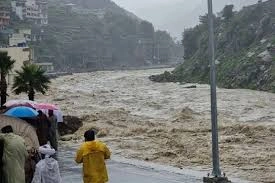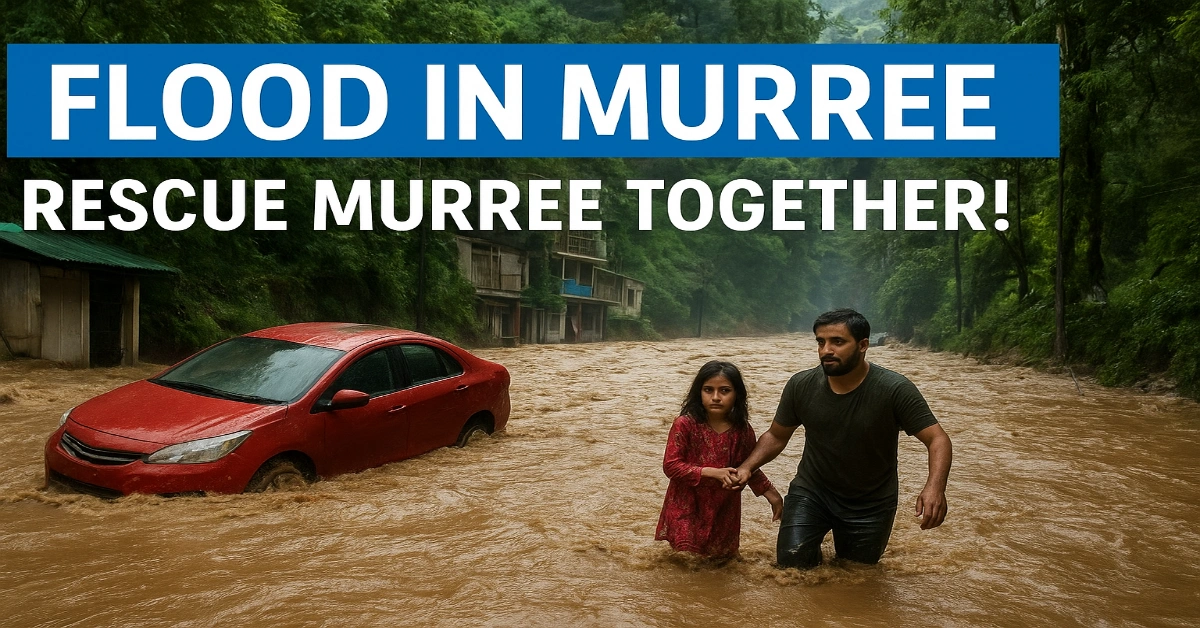Stay updated on the latest news and safety tips about flood in Murree. Learn causes, impacts, and solutions to protect lives during floods in Murree.The main reasons are poor drainage, weak planning, and lack of emergency systems.
Introduction to the Murree Flood Tragedy
The flood in Murree is a painful reminder of how natural disasters can change lives within hours. Heavy rains caused sudden flooding, damaging homes, blocking roads, and leaving families stranded. Many locals lost their belongings, while tourists faced dangerous conditions without proper shelter. The tragedy showed how weak planning, poor drainage, and lack of emergency response increase risks in hill stations. Learning from this event, stronger safety systems, early warnings, and better infrastructure are needed to protect lives and avoid such disasters in the future.
Understanding Murree’s Geographical and Environmental Vulnerabilities
Murree’s location in steep mountains and narrow roads makes it highly sensitive to natural disasters. During heavy rains, unstable slopes often cause landslides and water quickly gathers in low areas, leading to dangerous situations like the flood in Murree. Poor drainage, unplanned construction, and deforestation have further weakened the land, reducing its ability to absorb rainfall. These geographical and environmental challenges highlight the urgent need for better planning, strong safety systems, and public awareness to protect both locals and travelers from future risks.
How Urbanization, Deforestation, and Climate Change Worsened the Flood
Uncontrolled urbanization in Murree has replaced natural land with roads and buildings, blocking water flow and increasing flood risks. Deforestation has removed trees that once held soil and absorbed rainfall, making slopes weaker and landslides more common. At the same time, climate change has brought heavier rains and unpredictable weather, turning small streams into sudden floods. Together, these factors worsened the disaster, showing the need for careful planning, tree protection, and climate awareness to keep both people and nature safe.
The Immediate Impact: Lives Lost, Infrastructure Destroyed, and Communities Displaced
The flood brought sudden destruction that changed lives within hours. Many people lost their lives as rushing waters swept through homes and roads. Critical infrastructure like bridges, electricity lines, and transport routes collapsed, cutting off communities from help. Families were forced to leave their houses, with little food or shelter, creating a humanitarian crisis. The disaster showed how weak systems and poor planning add to human suffering, proving the urgent need for stronger safety measures and quick response systems to protect people in future emergencies.
Emergency Response: Government, NGOs, and Community Actions
In the aftermath of the disaster, the emergency response came from many sides. The government sent rescue teams, cleared blocked roads, and set up temporary shelters for affected families. NGOs played a key role by providing food, medical care, and clean water to those in need. Local communities also came forward, offering support, opening homes, and helping neighbors in distress. These combined efforts saved lives and reduced suffering, but the tragedy also highlighted the need for faster coordination, better planning, and stronger systems to handle future emergencies more effectively
Real Stories of Survival, Heroism, and Local Solidarity
During the flood in Murree, many real stories showed the strength and courage of people. Locals risked their own safety to rescue trapped families, while volunteers provided food, blankets, and shelter to strangers. Tourists shared how nearby residents opened their homes and guided them to safe places. These moments of survival, heroism, and local solidarity proved that even in the hardest times, unity and compassion can save lives and bring hope to an entire community.
Also Read:Flood in Karachi – United Hope for Karachi!
The Role of Social Media in Awareness and Relief Mobilization
During the flood in Murree, social media became a powerful tool for spreading awareness and organizing quick help. People shared real-time updates about blocked roads, missing persons, and urgent needs, which guided rescue teams and volunteers. NGOs and government agencies used these platforms to collect donations, mobilize relief goods, and connect with affected families faster. Ordinary citizens also played their part by posting verified information and offering support. This digital response showed how social media, when used responsibly, can save lives and bring communities together during disasters.
DunyaNews:https://www.youtube.com/@DunyanewsOfficial
Economic Consequences: Tourism Collapse and Long-Term Financial Losses
The flood in Murree caused a major economic setback, as tourism collapsed and businesses faced heavy losses. Hotels, shops, and transport services lost income, leaving many people jobless. The long-term financial damage shows the urgent need for recovery and better planning.
Preventive Measures and Sustainable Solutions for Future Flood Resilience
To protect against flood in Murree, strong drainage systems, tree plantation, and strict control on deforestation are key steps. Building on unsafe slopes should be stopped, and early warning systems must be used to alert people in time. Community awareness and eco-friendly planning can make Murree safer, reduce damage, and ensure long-term flood resilience.
Unite for Murree – A National Call to Rebuild, Support, and Prepare
The disaster in Murree is a reminder that recovery needs unity. Government, NGOs, and citizens must join hands to rebuild homes, restore tourism, and support families in need. At the same time, better planning and preparation are vital to protect against future





Join The Discussion